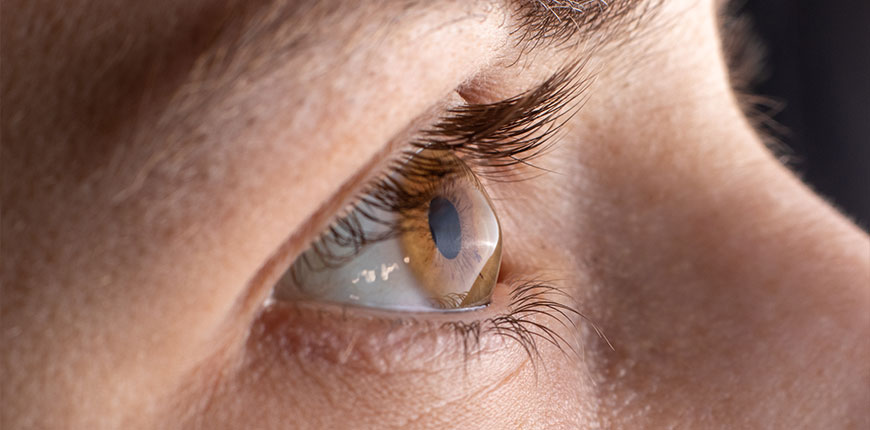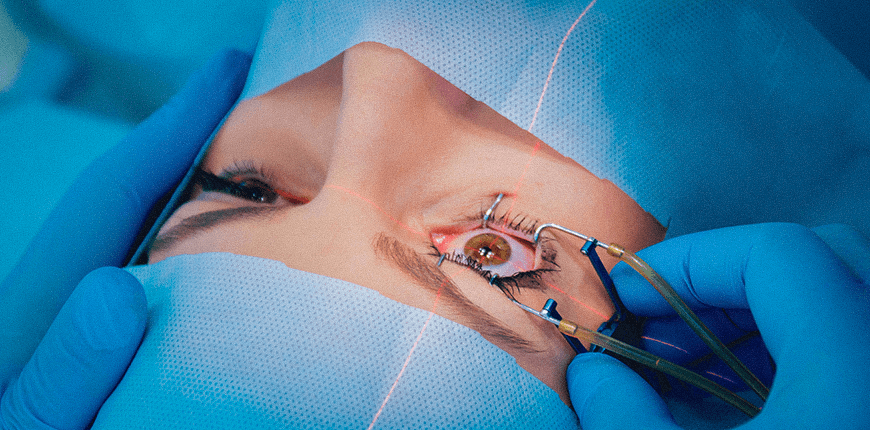
Corneal Transplant
The cornea is a transparent and round structure located on the outer surface of the eye and covers the anterior part of the eyeball. This section helps to refract the rays from light sources and collect them on the retina at the back of the eye.
It also acts as an important barrier to protect the eye from foreign substances, infections, and damage. The healthy functioning of this structure is important in order to have clear vision and eye health. However, infections, injuries, dry eye, and some other diseases can cause corneal damage or disorder.
In this case, treatments such as corneal transplant can be applied. In this way, it is ensured that the damaged or diseased corneal tissue is replaced with a healthy one.
The cornea consists of five layers. The outermost layer, the epithelium, provides protection from the air, water, and other substances that surround the eye. Bowman's membrane is the second thickest and strongest layer of the cornea and helps prevent deformities.
The middle layer of the cornea, called the stroma, is filled with collagen fibrils and maintains the shape and strength of the cornea. Descemet's membrane forms a thick border, and the last layer, the endothelium, maintains moisture balance and provides oxygen exchange of tissues.
Who Can Have Cornea Transplantation?
Corneal transplantation is a method used for treatment in people with damaged, cloudy or diseased corneas. While a corneal transplant is an effective lifelong treatment method, it requires the completion of a series of steps before the procedure can be completed successfully. These steps include assessing corneal compatibility, matching donor and recipient, transplant procedure, and post-follow-up.
Corneal transplantation is usually performed in cases where the cornea is damaged, such as corneal scratches, infections, inflammations, age-related disorders, contact lens wear, and some genetic diseases. A corneal transplant is used to treat vision loss, especially caused by corneal diseases.
However, in some cases, the diseases may be advanced and a corneal transplant is necessary not only for vision correction but also to stop the progression of the problem.
Corneal diseases include Keratoconus, Fuchs endothelial dystrophy, corneal ulcers, eye injuries, herpes infections, corneal dystrophies, and some contact lens complications. For corneal transplantation, the general health and eye health of the recipient is evaluated and then its suitability is decided.
How is a Cornea Transplant Performed?
A corneal transplant is a surgical procedure in which a person's damaged or diseased cornea is replaced with a healthy cornea from the recipient. The corneal transplant is performed by a specialist eye surgeon and is usually done under local anesthesia. During the procedure, the damaged or diseased cornea is completely removed and replaced with a healthy one.
The corneal transplant stages consist of the following steps:
1. Evaluation of Recipient and Donor Suitability: The general health, eye health and suitability of the person to be transplanted are determined. At the same time, the fitness of both parties is matched.
2. Donor Preparation: The new cornea is obtained from an organ donor. Corneas with eye diseases or infections are not used.
3. Recipient Preparation: Corneal transplantation is usually performed under local anesthesia. The area around the recipient's eye is sterilized and the eyelid is kept open.
4. Removal of The Damaged Cornea: To remove the cornea, a center hole is first created and then a cut is made through the corneal ring using a cutting tool. After the cutting process is completed, the damaged cornea is carefully removed and a new cornea is placed in its place.
5. Placement of The New Cornea: The donor cornea is placed and fixed with sutures. Sutures are usually made of self-melting material.
6. Recovery Process: After the corneal transplant, the recipient's eye is closed with stitches and kept under observation for a few hours in the hospital or clinic. Afterward, the recipient is followed up with regular checkups and the healing process is followed.
A corneal transplant is usually successful and provides a clear vision and recovery for many people. However, after the transplant, the recipient's immune system may react against the new cornea. For this reason, the recipient should go to regular checkups and use the drugs recommended by the doctor.
What are the DALK and DMEK Procedures?
 DALK, Deep Anterior Lamellar Keratoplasty, is a procedure in which certain layers of the damaged cornea (epithelium and Bowman's layer) are preserved and parts of the cornea close to its surface are removed. It's a less risky option than a full corneal transplant, as only some of the damaged sections are replaced. It also has less chance of rejection due to the preservation of healthy parts of the cornea.
DALK, Deep Anterior Lamellar Keratoplasty, is a procedure in which certain layers of the damaged cornea (epithelium and Bowman's layer) are preserved and parts of the cornea close to its surface are removed. It's a less risky option than a full corneal transplant, as only some of the damaged sections are replaced. It also has less chance of rejection due to the preservation of healthy parts of the cornea.
DMEK, Descemet Membrane Endothelial Keratoplasty, is an operation in which only the inner layers of the cornea (Descemet's membrane and endothelial cells) are replaced. In this way, a thinner layer of the cornea is replaced, it is a less risky option and provides a faster recovery process after transplantation.
In both procedures, the corneal tissue to be transplanted is specially prepared and placed instead of the damaged cornea. The DALK procedure is used for damage to the anterior region and the center of the cornea, while the DMEK procedure is applied specifically to damage to the posterior region of the cornea.
What Are the Risks of a Corneal Transplant?
The most important risk of a corneal transplant is the rejection of the transplanted tissue. In this case, the body perceives the donated corneal tissue as a foreign substance and begins to reject it. Tissue rejection is considered a serious complication and this situation is tried to be prevented with drugs.
Other risks of corneal transplantation include infection, increased intraocular pressure, leakage of intraocular fluid, development of cataracts in the eye, astigmatism, and vision loss.
Also, medications used for corneal transplants may have some side effects. These include eye redness, itching, watering, sensitivity to light, blurred vision, and eye pain.
When corneal transplantation is performed by an experienced ophthalmologist, it gives successful results and the risk of complications is low. However, corneal transplant candidates should carefully consider the risks and benefits of the procedure and obtain detailed information about the possible risks before the procedure.
-
How long does a Corneal Transplant take?
The corneal transplant process takes approximately 45 minutes to 1 hour. However, full recovery after the operation varies depending on the type of transplant, the health status of the person, and the rate of acceptance of the corneal tissue.
-
Is Corneal Transplant painful?
The corneal transplant is usually done under local anesthesia, so the feeling of pain will be minimal. However, there may be mild pain and discomfort after the procedure.
-
When can I go back to my normal activities after Corneal Transplant?
The time it takes to go back to daily activities after a corneal transplant depends on the person's recovery process. Usually, normal activities can be started within a few days after the procedure, but it's recommended not to do heavy ones at first.













